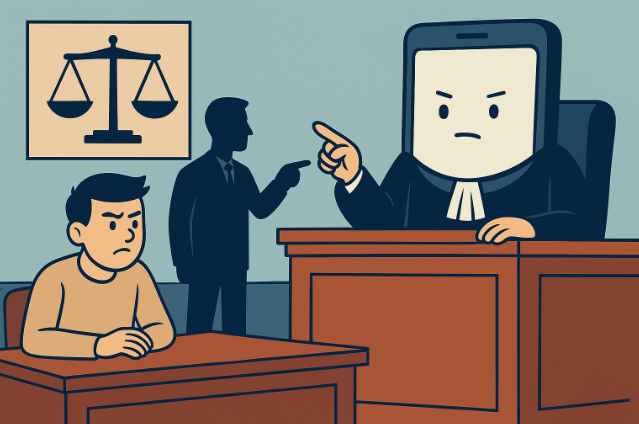
Exhibit A: 10 hours of reels already submitted by my phone.
If my screen time were a person, it would’ve filed a harassment case against me by now. No, seriously—the relationship is borderline criminal at this point. Every morning starts the same way: eyes half-shut, brain half-dead, thumb already scrolling like it’s a national duty. I don’t even brush my teeth before Instagram teaches me how to make “3-ingredient pasta that will change your life” (spoiler: it didn’t). By the time I snap back into reality, an hour has vanished—and so has my motivation to start the day.
Welcome to the modern-day love story: us and our glowing rectangles. A romance built on blue light, endless scrolling, and the occasional carpal tunnel.
The Problem We Don’t Admit Out Loud
We all joke about being addicted to our phones, but let’s be honest—it’s less funny and more tragic. Notifications are like clingy exes: mute them, and they come back louder. FOMO makes us refresh feeds like stock traders watching a crash. And doomscrolling? That’s a whole separate genre of self-sabotage. You unlock your phone to check the time, and suddenly you’re knee-deep in a conspiracy theory about pigeons being government spies.
But the real cost isn’t just wasted time—it’s invisible exhaustion. That scatterbrained, can’t-focus-on-anything feeling after hopping between 12 apps in 5 minutes. By bedtime, we’re not “resting”—we’re basically like our phones: plugged in but still buzzing.
And the irony? We call it connection. Yet we scroll past hundreds of friends’ updates while missing the sunset outside our own window.
Sarcasm, Meet Reality
If my phone were a person, every therapist would call it a toxic partner.
I can’t eat without it.
I can’t sleep without it.
I panic when it’s not around (classic “where’s my phone—oh wait, it’s in my hand” moment).
Once, at 2 AM, I Googled “why am I not sleepy?” while the blue light fried my eyeballs. Another time, I dragged my charging phone across the room like it was an ICU patient on life support. Rock bottom, ladies and gentlemen. (Though honestly, I’ve visited rock bottom multiple times.)
The Reflection
So what does this obsession really say about us? It’s not about loving gadgets—it’s about running from stillness. We don’t want silence. We don’t want to sit with our own thoughts. We want stimulation, distraction, noise—anything but boredom.
And here’s the cruel twist: we call it connection, but half the time it’s disconnection in disguise. I’ve double-tapped a stranger’s photo in New York but ignored a text from a friend who lives ten minutes away. I’ve scrolled through motivational quotes at 3 AM but ignored my actual to-do list at 9 AM.
Technology isn’t the villain. The way we use it is.
Enter Digital Minimalism (Don’t Worry, No Yoga Required)
Digital minimalism doesn’t mean selling your phone and moving into a cave. It’s about renegotiating the terms of the relationship. Right now, let’s admit it—we’re not using technology. It’s using us.
Think of it like food. You don’t eat every snack in the supermarket just because it’s there. So why do we consume every notification that pops up?
Here are some tiny hacks I’ve tried (and mostly survived):
- Lock Screen Truth Bombs – Change wallpaper to: “Just unlock to waste time again?” Surprisingly effective guilt-trip.
- Notification Purge – If it’s not a call or message, it’s gone. Instagram telling me “Harini liked a post” is not breaking news.
- Tech-Free Meals – Food really does taste better without a TikTok dance tutorial in the background.
- Offline Hobbies – Reading, journaling, sketching—even sitting quietly. Turns out boredom isn’t death; it’s where ideas hide.
- Time-Boxed Social Media – 30 minutes at night. If I want to scroll, I wait. Like controlled sugar intake for kids.
Life Beyond Screens
The first time I went for a walk without my phone, I felt naked. Every five minutes, my brain whispered: What if someone texted you? Spoiler: no one did. But I noticed things—the wind, a random dog with better hair than me, the sky with 72 shades of blue (not just “Instagram filter blue”).
Life felt more alive when I wasn’t documenting it. Presence is underrated—but addictive in the best way.
The Bigger Picture
We joke about screen time like it’s just “too many reels,” but it’s deeper. It’s rewiring our brains, shrinking our attention spans, and hurting relationships. When your partner competes with Instagram at dinner, who’s really winning?
Digital minimalism isn’t anti-tech—it’s anti-slavery. It’s about making tech serve us, not the other way around.
The Wrap-Up
No, I’m not suggesting an extreme detox where you burn your Wi-Fi router and meditate with monks. But small steps—lock screen reminders, no-phone meals, tech-free evenings—can slowly shift the relationship from toxic obsession to something healthier.
So if my screen time still files a harassment case, at least now I can show the judge I’ve set visiting hours. And honestly, that’s progress.
Because none of us wants to end up in a courtroom where screen time is the complainant, the phone is the star witness, and we’re the guilty ones on trial.
